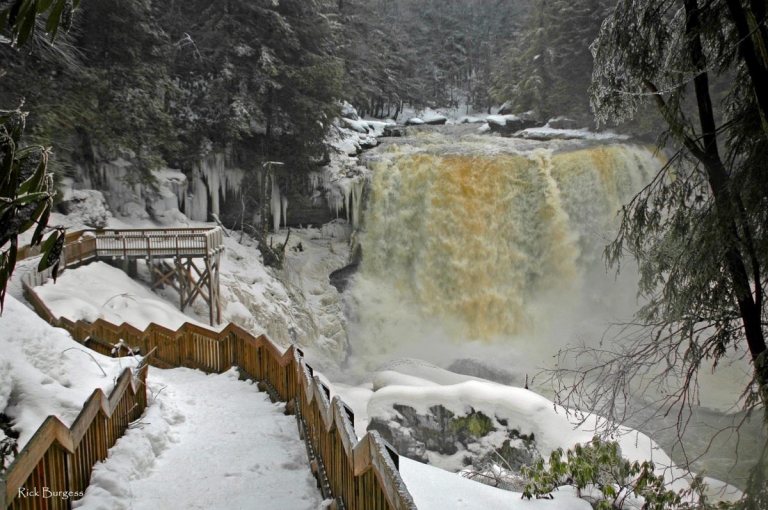Guided hikes have been scheduled for January 1, 2022, at eight state parks in West Virginia in concert with the national First Day Hikes program. The hikes vary in length and difficulty, though most range from one to three miles and are suitable for all ages.
The First Day Hikes are free and designed to showcase the natural beauty of the parks, and guides will provide participants with information on local history, wildlife, and points of interest. Hikes have been scheduled at the following parks.
- Blackwater Falls State Park
- Cacapon Resort State Park
- Cass Scenic Railroad State Park
- Chief Logan State Park
- North Bend State Park
- Pipestem Resort State Park
- Twin Falls Resort State Park
- Tygart Lake State Park
Hikers should dress in layers to be prepared for winter temperatures. Even on warmer winter days, park officials advise hikers to wear a coat, gloves, and hat.
Boots or sturdy shoes are a must to stay comfortable on the trail. Hikers may also wish to bring along water and snacks for longer walks.
Cold Weather Hiking
The American Hiking Society, a proponent of the national First Day Hikes initiative, offers the following advice for cold-weather hiking:
Dress in layers. While it is perhaps nice to have a huge, fluffy parka on the ski slopes, it really isn’t practical for the trail. Instead, take several layers you can peel off or put on when you stop and go on the trail. Your base layer should be a wicking fabric that will pull your sweat away from the skin. Overheating is a dangerous threat since excessive moisture that isn’t allowed to escape can freeze and cause hypothermia. If you ever wondered why some of your jackets have zippers under the armpits, it’s to keep air circulating and prevent your clothes from getting wet.
Wear a hat! Our heads are filled with oxygen-carrying capillaries which fuel our brains and consume one-third of the body’s energy. During the colder months, it is important to keep your head covered to maintain function and not lose precious body heat. You may want to bring a warmer/heavier hat for rest periods.
Keep your water bottle warm. Whether you are at the campsite or on the trail, a foam sleeve like a koozie will help prevent the water from freezing in a bottle. Nothing warms your body or your spirits like a warm liquid by a campfire. Boil water to take with you as you hike. Also, to keep water from freezing, keep your water bottle on the inside of your jacket – properly sealed, of course.
Use a sleeping bag liner. You don’t have to bulk up with a heavier sleeping bag for winter camping. Putting a liner inside a 20-degree bag is an inexpensive way to boost your bag’s rating to another 10 or so degrees.
Don’t toss the sunscreen. While this is most important if you are hiking in a snowy region, winter hikers often forget about the sun’s glare reflecting off of white snow.
Be prepared for shorter days. As early as October, dusk settles earlier and more quickly than in the summer. Have a good idea of the usable daylight hours before going hiking. Always carry a headlamp or flashlight with extra batteries.
In addition to these tips and hints, remember to follow normal safety practices as well when hiking in the winter. Be sure of the gear you take with you and if you have any specific questions, ask a local outdoor expert so you can stay safe.
Sign up to receive a FREE copy of West Virginia Explorer Magazine in your email weekly. Sign me up!





























